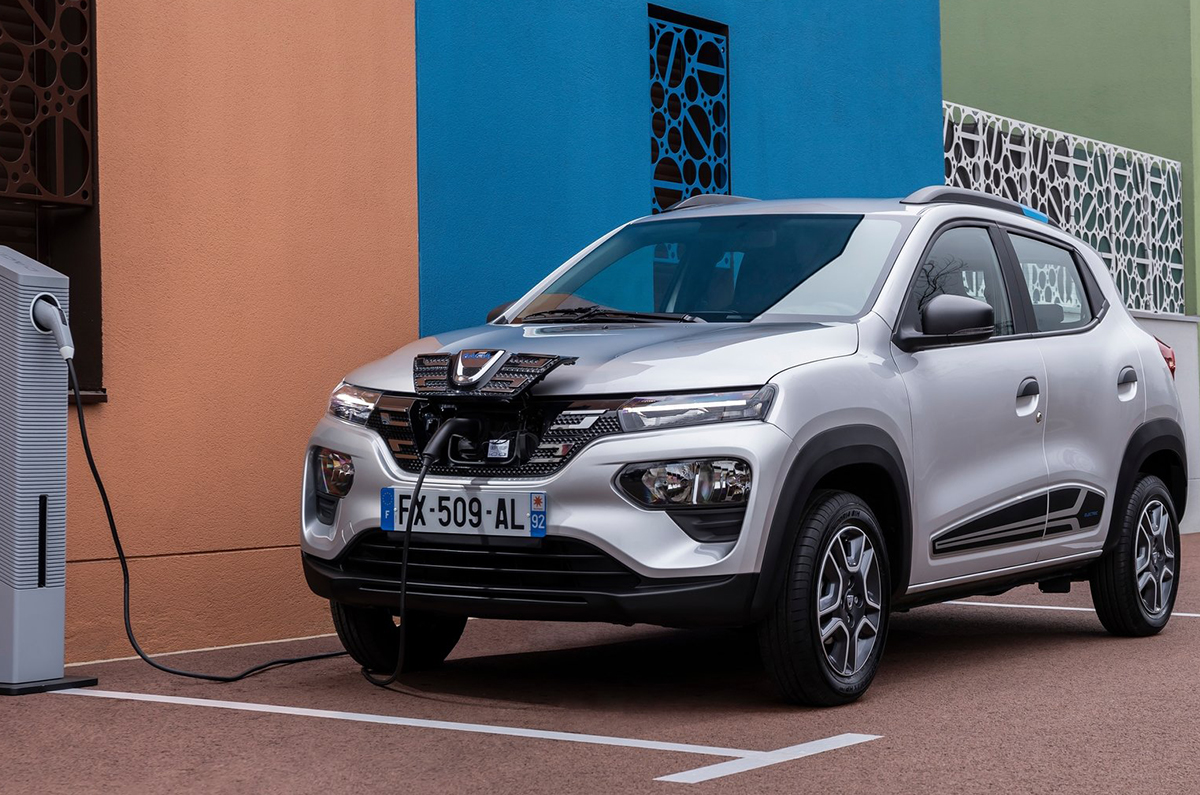Renault confirms Kwid EV; updated and localised version could come with locally manufactured battery pack.
Renault’s Kwid EV will be launched in India in the next 12-18 months. The sub-Rs 10 lakh electric car will be based on the modified and beefed up Kwid architecture, a car Renault already manufactures and produces here. The Kwid EV is expected to look a bit different from the regular Kwid sold here with details like the bumpers, lights and grille altered to look more EV-like.
The Kwid EV is currently sold in China and Europe under various nameplates such as Dacia and Dongfeng. The main attraction for Indian customers is likely to be its combination of extremely low running costs, ‘affordable’ EV pricing, a relatively spacious interior and crossover looks.
Renault Kwid EV: ICE to EV conversion, rivals
The Kwid EV sold in other markets gets significant changes to convert the internal combustion-engined (ICE) car: the fuel tank that sits at the rear has been removed; a flat floor is installed, and, after some strengthening, the floor’s ready to accept a flat, heavy battery. In addition, changes are also made to the suspension so that it can take the extra load.
Renault’s small EV will take on Tata Motors’ Tiago EV, the Citroen eC3 and MG’s compact EV, the Comet; a diverse bunch if there ever was one. The electric vehicle is based on the Dacia Spring, which itself is based on the Renault Kwid that’s made in India.
Renault Kwid EV likely to start with 55-60 percent localisation
“We are going ahead with our EV plans,” says Venkatram Mamillapalle, MD of Renault India, in conversation with Autocar. “The EV for India is built around the CMF-A platform, and you may see it in 2024 or 2025. We are trying our best to bring it at the earliest, but the exact timeline is not yet firmed up. Renault’s first EV for India is likely to come with a localisation level of 55-60 percent to begin with. However, the company is very keen on sourcing batteries and cells locally to bring down the cost to ensure higher penetration for Renault’s EVs in the future.”
Mamillapalle says that the company is in talks with several Indian vendors for sourcing of cells, and he is hopeful of finalising localisation of cells in the coming years. He also intends to have over 85-90 percent localisation once the process is completed.
Renault Kwid EV battery pack, range, power, torque
The Kwid EV in Europe has an output of 44hp and 125Nm, and comes with a 26.8kWh battery pack that gives it a claimed range of 295km (WLTP cycle) in the city. The battery’s relatively small size ensures faster charging time, according to the manufacturer, but the specifications for the Indian car are likely to differ.
The success of the Renault Kwid EV depends on many factors, but what should give Renault some confidence is that the Tiago and Tigor EVs have collectively sold 50,000 units. As ever, pricing the car competitively, at least initially, will be key.
With inputs from Shapur Kotwal
Also See:


